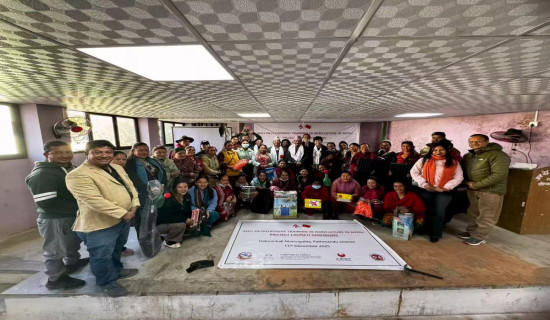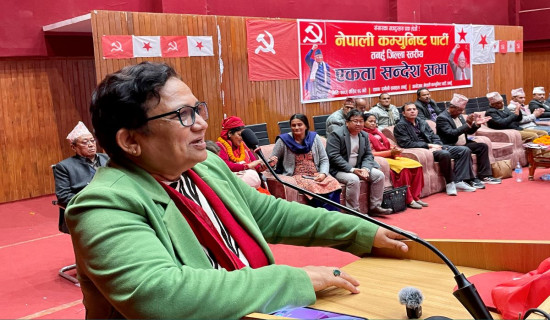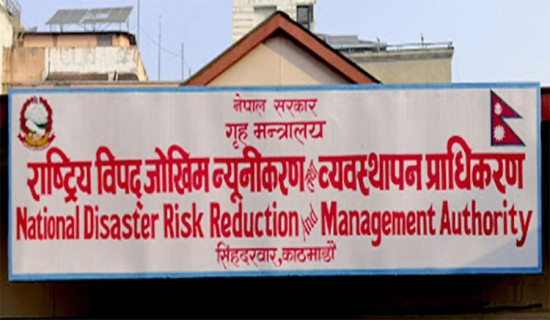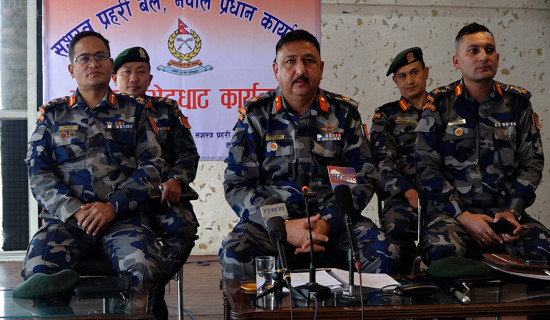- Friday, 12 December 2025
Vacant Rental Spaces
Mica Pokharel
Kathmandu, the bustling capital of Nepal, is often described as chaotic, lively, full of people and vehicles. The city, being the hub of development, is also equally known for its noise and constant movement. Yet, amidst chaos, a growing silence is taking over — the silence of empty rental spaces, from closed shutters to empty malls. This silence speaks volumes about the growing issue of deserted commercial spaces that are slowly turning parts of Kathmandu into dead zones.
In this growing plague of vacant spaces, it’s hard to miss the ‘TO-LET’ signs plastered on countless buildings across the city. Over the years, I’ve seen these signs pop up not just in developing areas, but also in places that were once commercial hotspots. Despite the bustling nature of the city, there seems to be a disconnect between the supply of rental spaces and the actual demand for them. The oversupply of these commercial spaces is evident, with an equal number of occupied and empty shutters visible everywhere — from small alleyways in residential zones to major shopping malls.
One of the most prominent examples of this phenomenon is the 17-story abandoned building at Radhe Radhe. For 14 long years, this structure has stood tall, untouched by commerce or life. Although it has become a recognisable landmark, its very existence is a testament to poor planning and neglect. It was built with the intent of serving a commercial purpose, but now, it’s just a symbol of wasted potential. Unfortunately, this is not an isolated case — it reflects a larger trend across the city.
The Valley is currently facing a market downturn, with an alarming increase in ‘TO-LET’ signs across the city. The commercial sector, from small shops to large malls, is struggling. Vacancy rates in shopping centres are rising as high rental costs make it difficult for small businesses to survive. Shops in malls and large commercial centres like Civil Mall, City Centre, Chhaya Centre face similar issues, where even in bustling zones, units remain ‘TO-LET’ for months or more due to high monthly rents that can soar up to Rs. 2.75 lakh, further discouraging potential tenants. Even in prime locations like Thamel and Ratna Park, vacancy rates remain significant, as many businesses prefer shifting to online platforms over investing in physical setups, which also drives down demand for these rental spaces.
Adding to the problem, there’s a continuous wave of new commercial buildings being constructed, particularly in residential areas. More and more empty shutters are being added to the rental pool, along with constant, haphazard construction of commercial buildings. The poor planning behind these developments results in a cycle of frequent business turnover. Many businesses open in these spaces, only to close within months. The streets, once filled with thriving small businesses, now feel suffocated by the constant change and empty storefronts.
The excessive development of rental spaces is contributing to what many now describe as a “dead city” effect. Empty streets and vacant buildings dominate parts of the urban landscape. These spaces, which were once built to serve a meaningful purpose, now sit unused and forgotten. Poor planning, economic struggles, and technological shifts have all played a role in the creation of these dead spaces.
The question now is: what can be done to revitalise these areas and prevent further decay? The city needs to reassess its approach to urban development. Planning should be driven by actual demand rather than speculation. In addition, developers need to focus on creating mixed-use buildings that combine commercial, residential, and recreational spaces in a way that benefits the community. The Valley's rental crisis is a product of both rapid urbanisation and economic mismanagement. However, with thoughtful intervention and better planning, it is possible to repurpose these empty spaces into something vibrant and useful once again.










-original-thumb.jpg)


-original-thumb.jpg)


